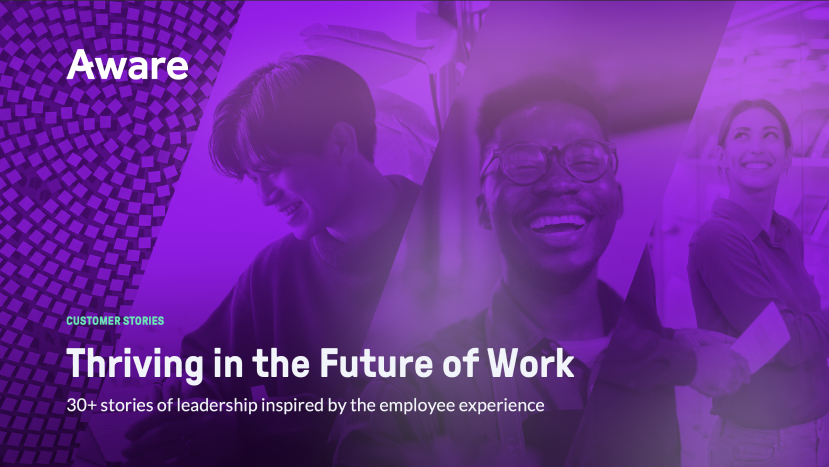3 Top Collaboration Security Risks and How to Mitigate Them
by Aware
Collaboration tools like Slack, Teams, and Webex were designed to make it faster and easier for employees to share information and work collaboratively. But they also make it easier for malicious actors to exfiltrate data undetected. Here’s how three major enterprises are mitigating collaboration security risks today.
The digital transformation brought with it advances that have transformed the way modern businesses work, perhaps none so dramatically as the tools that enable people to collaborate remotely from anywhere in the world. They kept the global economy going during pandemic lockdowns, and employees have embraced the ability to work asynchronously from any location using any device. Today, around 80% of workers use at least one collaboration tool.
This represents a new risk surface that security officers must address in order to protect the business from data leaks, compliance fines, and legal exposure. Tackling these needs in sprawling, unstructured datasets that were designed to circumvent controls, not impose them, has proven a challenge even for leading organizations. However, high-profile incidents such as the Uber breach—during which the hacker specifically targeted and exfiltrated Slack data—demonstrate the growing urgency for solutions that secure collaboration tools.
Here's how three major enterprises are addressing those risks and safeguarding their digital workplaces today.
Protecting IP with targeted DLP workflows
Some of the most valuable information a business holds is proprietary data and intellectual property. Detecting this information typically relies on restricting document sharing across the enterprise, creating roadblocks that prevent people from working effectively, or monitoring for keywords and manually searching through false positives for real security incidents.
To protect the development of their latest product, a global video game designer turned to Aware to solve the problem of protecting their IP while liberating their employees to collaborate effectively between departments and contractors. With Aware’s contextual intelligence platform, the company was able to build automated workflows by user segments that identified unauthorized information sharing while minimizing false positives. This enabled the company to keep the new game under wraps until launch without obstructing progress or creating an unmanageable workload for security teams.

Read More: Protecting Valuable IP with Aware’s DLP Capabilities
Proactively preventing security incidents
The biggest challenge facing infosec teams is preventing security incidents before they occur. This typically involves balancing the controls required to protect valuable information with the freedom to work without being stifled by restrictions. Too many limitations and employees will seek out alternative ways to circumvent the rules, introducing unmanaged shadow IT to the enterprise. Over a third of employees say they need to bypass company security measures to get their jobs done.
When an international retailer saw a competitor fall victim to an employee phishing scam, they turned to Aware to understand how a similar attack would impact them. The security team recreated the scam, then used Aware to create workflows that automatically identified victims using real-time OCR and AI technology. The test proved a valuable exercise in understanding and improving their risk posture and training employees to avoid falling for a real scam in the future.

Read More: Addressing Security Risks Before Breaches Even Occur
Improving the results of forensic investigations
A major telecom provider conducts biannual internal forensics as part of their standard insider risk and DLP protocols. Analyzing collaboration tool usage to identify sensitive or restricted information within massive, unstructured datasets was becoming increasingly complex and time consuming. They needed a solution that could expedite search and eDiscovery within collaboration messages.
Using Aware, the company was able to bring order to the chaos of their collaboration tools, and quickly discovered that fraudulent activity was three times higher than previously thought. To resolve the situation without restricting employee access to the popular workplace tools, the company retrained employees on proper use of collaboration and used Aware’s AI-powered policies to automatically detect noncompliance in real time.

Read More: Proactively Reducing Fraud in Internal Collaboration Tools
Secure your digital workplace with Aware
Aware’s AI powered employee listening platform was purpose-built to address security and compliance challenges within collaboration datasets. With real-time workflows designed for the unique nuances of digital conversations, Aware empowers cybersecurity leaders to take charge of their collaboration tools and secure their information wherever it’s shared. Download more stories of how Fortune 500 leaders are leveraging Aware to secure their data and get inspired to transform your approach to infosec in the modern workplace.










